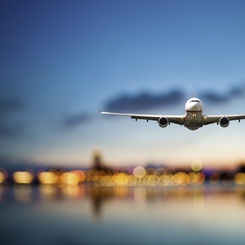For someone who’s over six feet tall – or anyone, for that matter – it’s not very easy to ‘sit back and relax’ when flying economy. Once you’ve got your knees jammed up against the seat in front of you, your arms uncomfortably crossed so as not to invade the shared armrest, and your head slumped forward in an effort to at least sleep through some of the agony, it becomes clear that there is just not enough room in the economy section of long-haul flights. So, should you pay more for an upgrade?
Most major carriers today have a three to four tier class system: First, Business, Economy Plus and Economy. But to make ‘upgrading’ more desirable, the economy sections have shrunk over the years in order to leave more space to the classes above. On an average long-haul destination flight with a medium sized plane, around 15 percent of the passengers use 35 percent of the plane’s space (first class), 25 percent of the passengers use 25 percent (business / economy plus), while the other 60 percent share 40 percent of the space in the plane (economy).
Can traditional airlines really compete in a low-cost price war?
Airlines have been justifying this class-space ratio with price discriminatory arguments, and as a response to the many low cost rivals in a hypercompetitive environment. But competing isn’t easy for major carriers. Often, their cost-cutting strategies involve joint venture partnerships with other airlines, cost cutting initiatives on at least short-haul flights, and sometimes even the creation of their own low cost airline. These strategies are all time intensive and fraught with legal, managerial and operational pitfalls.
Take for example last year’s strike by Air France and Lufthansa’s pilots’ against the development of low-cost venture Aviata and Eurowings: it’s never easy for traditional airlines to operate a dual strategy. Plus, many those lost-cost units that are up and running have failed to help major carriers take on their low-cost competitors. Low cost units such as United’s Shuttle, SAS’s Snowflake, and Delta’s Express have all gone out of business or have been sold. A dual strategy needs to be proactive, offensive, and with synergistic effects and benefits for the mother airline and its low cost unit.
How is the low-fare strategy impacting customer loyalty?
Because many major carriers have chosen to compete with low-cost carriers by trying to offer the lowest price, prices have plummeted. But here again, low-cost airlines, unburdened by premiums, have the clear advantage. Furthermore, the cost cutting activities of many traditional airlines have focused on customer services and comfort which, in turn, have negatively affected customer loyalty. Priority seat selections, priority check in desks, priority security lanes, priority boarding, and priority luggage claims to retain the loyalty of those few “frequent flyers”. But what message is this sending to those customers who don’t have the “priority” luxury?
An alternative strategy?
Some observers have suggested that major carriers might want to reconsider their customers and their particular needs – and provide solution packages which low cost ventures are not capable of copying due to their limited product ranges and service capabilities. They need to look at reducing costs in ways that shift the burden away from their customers. For example, instead of continuously decreasing the seat sizes and row distances to pack more passengers onboard, airlines might want to focus on decreasing the weight of seats. Today there are Titanium seats which weigh 4kg in contrast to the commonly used seats at 11kg. Such a weight difference has a significant positive impact on fuel consumption costs for airlines, and no negative implications for the service and comfort of passengers.
Finally, airlines need to be more flexible in their strategic approaches to better cope with environmental complexities and uncertainties. Whether it is a global or regional economic downturn or a drastic rise (or fall) of oil prices, airline companies need to be able to act more proactively, and have at hand contingency plans and adjustment tools which allow to better adapt and respond to today’s uncertainties.









